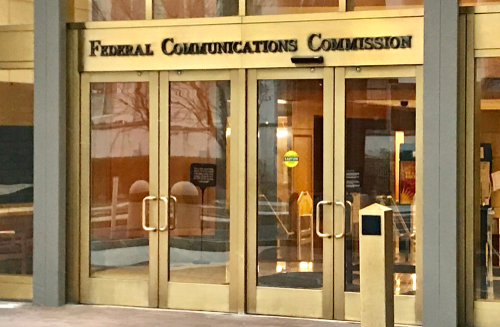EEI offers comments on FCC proposed rule to open up spectrum to unlicensed users

The Edison Electric Institute (EEI), which represents all of the nation’s investor-owned electric companies, welcomed April 1 draft rules from the Federal Communications Commission (FCC) to permit unlicensed devices to operate in the 6 gigahertz (GHz) band.
“EEI and our member companies appreciate the FCC’s efforts to work with all stakeholders to research the feasibility of using the wireless spectrum more effectively and more efficiently,” said EEI President Tom Kuhn on April 3. “A broad cross-section of critical infrastructure industries and public safety providers depends on the 6 GHz band for essential and mission-critical communications.”
The FCC’s draft rules would make 1,200 megahertz of spectrum available for use by unlicensed devices, which would share the spectrum with incumbent licensed services. The rules are crafted to protect licensed services while enabling both unlicensed and licensed operations to successfully operate throughout the band, according to the FCC.
“By doing this, we would effectively increase the amount of spectrum available for Wi-Fi almost by a factor of five,” said FCC Chairman Ajit Pai in a statement last week. “This would be a huge benefit to consumers and innovators across the nation. It would be another step toward increasing the capacity of our country’s networks. And it would help advance even further our leadership in next-generation wireless technologies, including 5G.”
If adopted, the FCC’s draft Report and Order would authorize two different types of unlicensed operations: standard-power in 850-megahertz of the band and indoor low-power operations over the full 1,200-megahertz available in the 6 GHz band. An automated frequency coordination (AFC) system would prevent standard power access points from operating where they could cause interference to incumbent services, the FCC said.
“Ensuring continued and unimpeded access for incumbent users is paramount, and we believe all unlicensed devices, including indoor devices, must be part of an AFC regime that would help to prevent interference with existing critical communications,” said EEI’s Kuhn.
The FCC’s Further Notice of Proposed Rulemaking would permit very low-power devices to operate across the 6 GHz band to support high data rate applications, including high-performance, wearable, augmented-reality and virtual-reality devices.
Specifically, the rulemaking would seek comment on making a 1,200-megahertz block of spectrum available for the development of new and innovative high-speed, short-range devices, and seek comments on power levels and other technical and operational measures to avoid causing interference to incumbent services, according to the FCC.
“We intend to file comments with the FCC outlining elements of the rule that we support and provisions with which we have concerns,” Kuhn said.
For instance, Kuhn said that EEI supports the AFC requirement for outdoor devices and agrees that there needs to be further study of very low power devices before they enter the band.
“However, the FCC’s draft rule does not include an AFC regime for indoor devices, and our technical analysis found that, without these guardrails, harmful interference from indoor unlicensed devices poses a very real risk to disrupting the operation and reliability of mission-critical communications, including those that help electric companies monitor and operate the energy grid,” said Kuhn.
He added that EEI remains committed to working with the FCC “to ensure critical infrastructure industries are protected from harmful interference from unlicensed devices.”
The commission plans to vote on the draft rules at its April 23 open meeting.
